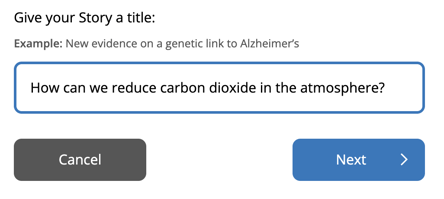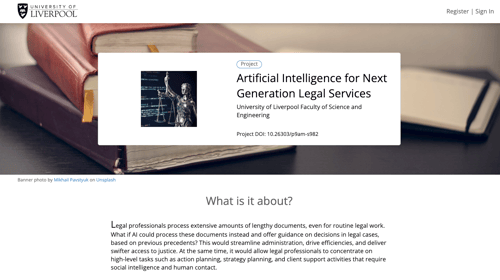Writing a plain language Story about your research will help more people find, understand, cite and act on it. You don't have to be a communication expert, and it doesn't have to take a lot of time. Let us help you tell your Story.
4 minute read. Short on time? Jump straight to step-by-step guidance
Think about who you are trying to reach with your research. As well as reaching other academics in your field, you may want to reach people in other sectors who can benefit from your findings, or put your results into practice. These other audiences might include industrial scientists, policy makers, practitioners, educators, patients, or the media.
Which two or three of these are most likely to be able to act on your research? These are the groups you should keep at the front of your mind as you write your Story.

What do they already know about your topic? What do they think about the topic? And what is it they need? At this point? Do they need information because the key challenge here is simply a lack of awareness? Or do they need persuasion because they already know something about your topic, but they're not taking the kinds of actions that you would recommend?

The people you are addressing may not be familiar with the language of your field. They may not be reading in their native language. They may not be highly educated or literate. Imagine you are talking informally with a younger relative. Aim for the language you would use and the depth you would go into when telling them what you do:

Don't just list facts, tell a story. Try to stir your audience's imagination. There's widespread evidence that emotions are key to memory. So if you want your audience to remember and apply your recommendations, then appeal to their emotions. Think hard about how you can relate your work to people's everyday life or the broader societal issues that they might be aware of or interested in. Catch people's attention, and make your work feel relevant, topical and timely. Imagine someone asking you "so what?” and consider whether you have answered that implied question.




Ready to move on? Next in series:
How Kudos builds views of your research
How to: get more people reading the Story of your research
Social media: tips for scientists, researchers and academics

We like these Stories that have been told by researchers using Kudos:
 Example text:
Example text:
The environment in which we work can have a huge influence on our dietary and physical activity behaviours. SWISH, a pilot randomised control trial, is working with schools across the Hunter and New England regions to implement existing healthy eating and physical activity programs. With a flexible design and minimal time and cost commitment from the school, the program has the potential to provide significant benefits to school staff wellbeing.
 Example text:
Example text:
Legal professionals process extensive amounts of lengthy documents, even for routine legal work. What if AI could process these documents instead and offer guidance on decisions in legal cases, based on previous precedents? This would streamline administration, drive efficiencies, and deliver swifter access to justice. At the same time, it would allow legal professionals to concentrate on high-level tasks such as action planning, strategy planning, and client support activities that require social intelligence and human contact.
 Example text:
Example text:
Smart shoppers are people who compare and track prices and promotions before making a purchase decision. Smart shoppers embrace the values of the social context in which they operate. Our research offers international retail managers guidance on how to best stimulate smart shoppers’ positive responses towards private label products.